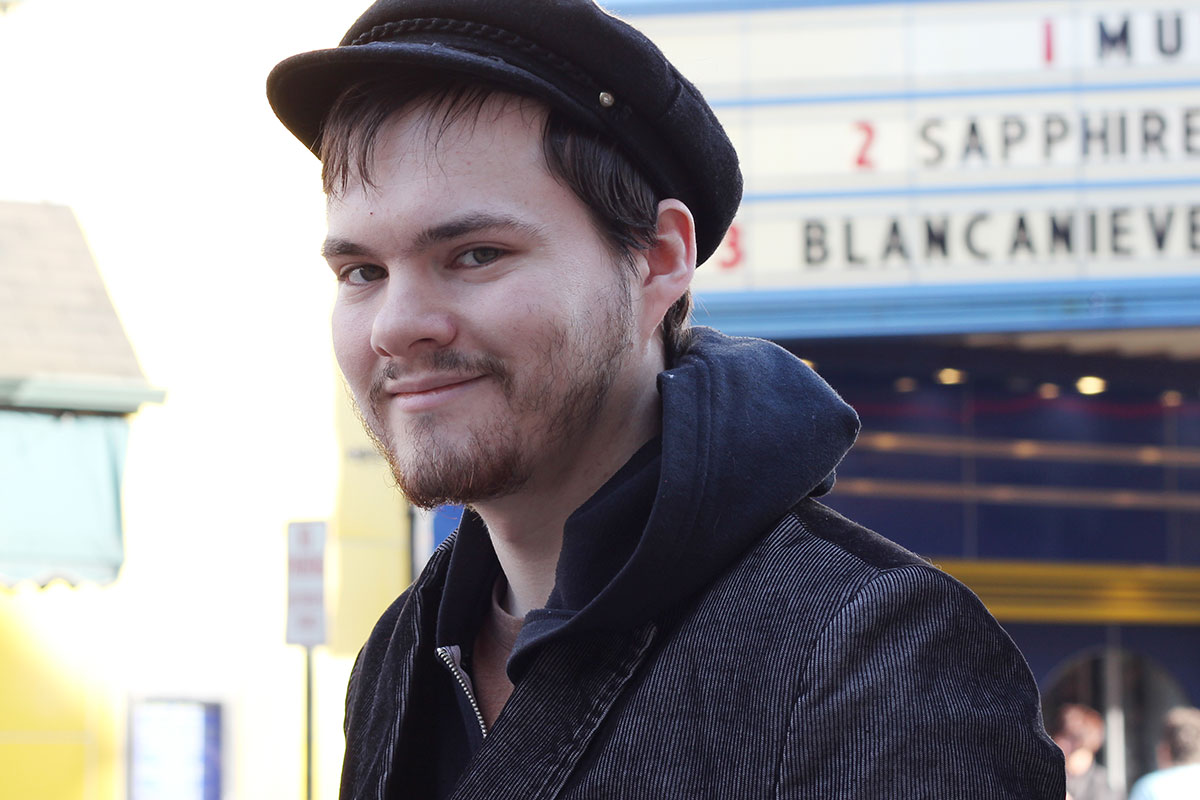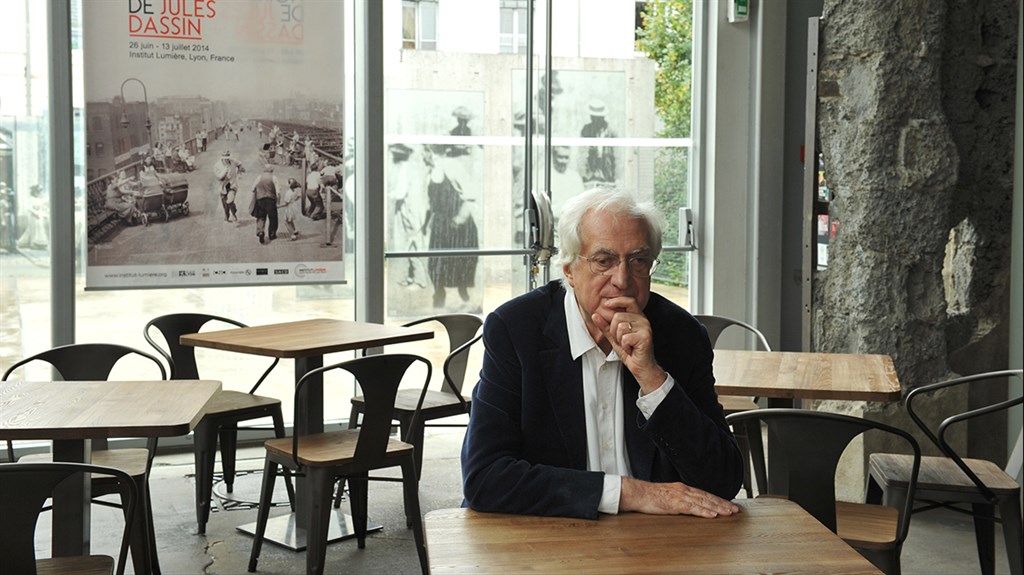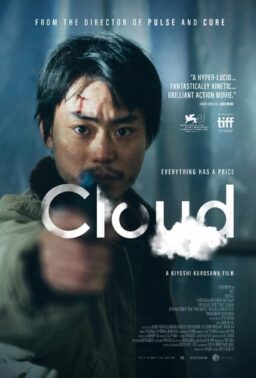Bertrand Tavernier was a man who in his private life rode cinema history like the ticket taker on a great freight train, and in his professional life was so doggedly idiosyncratic it can be impossible to tell when some of his best work was made. He split the difference between an impressionist and a modernist and the result is a cinema that seems to sit entirely outside currents and movements. He wasn’t a member of the French New Wave, wasn’t an incendiary stylist whose name every director now drops to seem sophisticated. Tavernier was a man whose passion for cinema was quite simply far greater than it can even be possible to understand. Like Martin Scorsese or Joe Dante he’s as known for his collection of memories, anecdotes, memorabilia, and friendships as he is for the work he made. He was a man who kept history alive while making it with his own fiercely independent work. We’ll never see someone like him again.
Tavernier was born in 1941 to a father who’d stayed true to his anti-fascist convictions during the war. He’d been the president of the Poets Essayists Novelists Club and had published a wartime resistance journal to help keep the public face of the French anti-Nazis armed with inspiration and example. Tavernier’s life was filled with towering father figures with similar credentials. He went to work for former Resistance member Jean-Pierre Melville after the Parisian hellraiser turned to cinema in the late ’40s. Tavernier wasn’t yet 20 when he started doing production assistance on Mellville’s “Leon Morin, Priest,” and he wasn’t 21 when Melville fired him because he was bad at the job. There was no love lost between the two men (perhaps it was their shared love of American movies that kept them down by law) because Melville hired Tavernier again, this time as the publicist for his follow-up, 1962’s stunning “Le Doulos,” still one of the great caper pictures some 60 years later. Tavernier had more of a knack for publicity because he was such a frequent movie goer and understood how best to sell auteur-driven product to audiences. Together with partner Pierre Rissient they tried in their own little way to keep France’s diet of cinema varied and nourishing. Tavernier once had the unenviable task of entertaining a heroically tanked John Ford around Paris when he came to do press for a movie (probably “7 Women”) and noticed something when he brought the craggy old drunk to the set of a Claude Chabrol film: he seemed to age backwards when he was in reach of a camera. Watching the movie get made he lit up like a Roman candle. It couldn’t have been lost on the young Tavernier that he spoke the universal language of film.
One of the tenets of the French New Wave (as coined by Jean-Luc Godard— whose film “Contempt” Tavernier worked on as a publicist—and Francois Truffaut) was a disavowal of classic French cinema. Part of the reason Tavernier never quite fit in with the new wave firebrands was he sincerely loved the tradition of quality cinema they wanted to supplant. As he explains in his essential series/movie “My Journey Through French Cinema,” his final work as a director, he lapped up the films of Julien Duvivier, Jean Renoir, Claude Autant-Lara, and Jacques Becker. He dedicated his first film to the writer Jacques Prévert, was a prolific film critic all his life, collected the correspondences and histories of all of these filmmakers, and even made a movie (2002’s “Safe Conduct”) about the war-time lives of filmmakers Jean Devaivre, Jean Aurenche, and Maurice Tourneur. He was movie-crazed and saw no value in rejecting film history on the basis of taste. He took the long view and it made him something like a living dictionary, the antithesis of Godard’s cinema of selective memory. Later in life Tavernier would appear in hundreds of documentaries, video essays, and interviews about the history of cinema because he was there for so much of it and had thoroughly researched everything he missed.

After a few years as a publisher, he naturally decided to start directing. He made a few shorts in the early ’60s but he wouldn’t properly directed until his feature debut, 1974’s still bracing and wild “The Clockmaker of St. Paul.” Based on a harrowing tale of crime and punishment by Georges Simenon, it tells the story of a man who learns his son is a murderer and then falls headfirst into a spiral. It was the story of modern France: a man (Philippe Noiret, who would become for Tavernier what John Wayne was to John Ford) who quite literally kept his head down (the better to inspect the intricacies of the watches he makes) all his life learns he created a monster. People vandalize his shop, the man begins alienating his friends and relations (including in a heartbreaking scene, the detective who holds his hand through the entire investigation played beautifully by Jean Rochefort), and all the while he tries and fails to keep his image of the beautiful son he once had alive. The movie seems driven by hopelessness until a stunning final scene where after a film away from him, Noiret is reunited with his son and they talk like nothing had happened. The film’s cumulative effect sneaks up on you just before clobbering you. What have we done? Where are we headed? Could we have done things differently?
Tavernier the director was obsessed with questions of historical accountability. He made films set in both the recent past and times medieval (and occasionally the present and future) and treated them with the same steadfastness. He professed to be influenced by Renoir, Ford, and William Wellman, and I think the navigation of their three incredibly distinct modes produced a style that looks fairly ordinary until you try to classify it. From Ford he adduced a poetic presentationalism, an iron clad sense of when to move the camera and how to make sure it lands on the perfect composition, to keep stillness and motion in perfect alignment. From Renoir, the penchant for blackhearted crime stories duking it out with cow-eyed sentimentality. From Wellman, a hugely contradictory bundle of reactionary politics and biting authenticity as a collector of personalities and gestures. He admired that above all else Wellman wanted to “credibly depict the behavior of people he knew, not to analyze or criticize them,” as he wrote in a 2004 piece for Film Comment.
Put this together and what you have is a sensibility that bucks traditional cinematic mannerism (the score never tells you what to think, close-ups are rare) in favor of something like an objective gaze at poetic truth. Tavernier was most at home arranging people or groups of people in forbidding and hungry landscapes. Whether that be Harvey Keitel and Romy Schneider ambling around Scotland in “Death Watch,” the family of painter Louis Ducreux in “A Sunday in the Country,” or the platoons under the command of “Captain Conan.” He blocked and lit like a painter but he choreographed his camera movements like he stepped in to finish one of Ford’s westerns. His movies thus all have precisely the same “feel,” though they seemed to share little on the surface.
“Clockmaker” was an enormous success critically and commercially, and it led him into a period of almost unthinkable productivity. Tavernier managed almost a film a year between 1974 and 2002, an absurd work ethic, especially when considering the demands of each production. First came yin and yang period pieces “Let Joy Reign Supreme” (optimistic) and “The Judge and the Assassin” (bleak). “Spoiled Children” with Michel Piccoli followed in 1977 and then the bizarro sci-fi tone poem “Death Watch,” a film that seems like an Alan Clarke BBC TV Play was highjacked by Wim Wenders.

His best known film (and it is extremely strange to think of this movie as anyone’s highest profile production) was the 1981 Jim Thompson adaptation “Coup de Torchon.” Based on Thompson’s Pop. 1280, it follows Noiret as a laconic and ineffectual sheriff in French colonized West Africa. One day, seemingly out of nowhere, he decides to kill some people he doesn’t like as a way to reassert control over a life that’s been completely stripped of agency. Then he can’t stop killing people who bother him. Thompson and Tavernier were ideologically simpatico as storytellers. Both men loved the idea of random chaos and true cruelty governing so much of history because it was the narrative that so frequently gets left out. Why do bad things happen? Because bad people will them so and never pay for them.
Tavernier was frequently attracted to stories like this, from 1976’s “The Judge and the Assassin,” in which a law abiding man grows increasingly sadistic the more time he spends with a murderer who he can’t seem to get the law to punish, to the much derided 100 Years’ War drama “Beatrice” (1987). In that film, which Thompson could have written, a young Julie Delpy waits patiently for the father she idolizes to return from battle, and when he does he sexually assaults her, denigrates all and sundry, ruins their home, and all but kills her timid brother until he’s undone by the same act of violence that gave his life purpose. Where Tavernier and Thompson seem like strange bedfellows is that the director is unwilling to adopt a subjective point of view that seems to align with the sadism both men love depicting. You expect from the plots of any of his movies the hard charging intensity of a Paul Verhoeven or a William Friedkin, but Tavernier never once lost the classical touch he learned from Becker, Duvivier, Ford, Wellman, and Renoir. If anything the steadiness and impressionistic beauty of his compositions makes the films even more unsettling because they portend a historical gaze that will flatten the violence into something admirable. He lived long enough to see the Nazis his father and Melville fought to unseat rise to power once again. He knew that history always had the last laugh.
After “Coup De Torchon” came a string of well-liked movies that never quite found a foothold in film culture. 1984’s “A Sunday in the Country” is a Renoir-inspired study of a family that finds purpose in moments of quiet bonding. 1986’s beautiful “Round Midnight” came closest. It stars saxophone virtuoso Dexter Gordon as a down-and-out jazz musician in exile in Paris, helped back to grace by an ardent fan. It’s a stupendous film and Tavernier’s unemphatic mise-en-scene serves the ambling narrative and Gordon’s soulful performance magnificently. Tavernier was a student of jazz and blues in American culture and loved them to madness. In 1983, he and Robert Parrish directed “Mississippi Blues” and you can sense Tavernier’s boyish excitement to be in the presence of live gospel music and blues legends. In “Midnight,” the ardor that François Cluzet’s besotted hero feels in Gordon’s presence was a not-at-all veiled stand-in for the director’s own. He cared about these artists and felt protective of them and their story, as he did his heroes of filmmaking. This was probably the film where his style as a director was most perfectly wed to the subject matter he chose (which explains why this is the rare film about jazz that jazz musicians actually like, to say nothing of critics), though there were still more great movies in his future. “Captain Conan,” “L.627,” “Safe Conduct” (a film as keenly romantic about filmmaking as “Round Midnight” is about jazz), and “In The Electric Mist,” are highlights, painterly evocations of violence and its grip on the narrative of the 20th century.
All the while he was writing, curating, preserving, and trying to help the careers of people he admired. He tried to produce one last film for his longtime friend the Italian director Riccardo Freda (whom he had met doing publicity for Freda’s “Mexican Slayride”) called “La fille de d’Artagnan” but star Sophie Marceau hated working for him and insisted Tavernier step in and direct it himself. He had his revenge by not directing it nearly as carefully or considerately as he did the films on either side of it, though it did afford him one last chance to work with his favorite leading man, Philippe Noiret. If the film is a notch below essential, it’s still a stirring showcase for a versatile performer who sword-fights and pirouettes and delivers earnest graveside monologues. Tavernier loved Noiret dearly and when he worked with Tommy Lee Jones on “In The Electric Mist” he couldn’t help but compare him unfavorably. After all, Jones refused to eat on camera (a cardinal sin in Tavernier’s films), something Noiret never passed up a chance to do for his old friend.

Tavernier got something like a redo of “La fille de d’Artagnan” when he made 2010’s “The Princess of Montpensier,” a gorgeous swashbuckling pastoral in which Mélanie Thierry is caught between the affections of three noblemen in 16th century France. Her plight is emotionally rendered and Tavernier navigates the demands of the story ably. It’s a much more fitting swan song to his career as a dramatic filmmaker than 2013’s limp “The French Minister.” It’s not a bad film, Tavernier didn’t make those, but it does seem rather like an admission of defeat from the veteran director.
By 2017, it was time to reflect, and reflect Tavernier did. His 2017 series “My Journey Through French Cinema” is a towering thing, an equally thrilling and melancholy reminiscence through the culture that shaped him as a boy and later an artist. Part-memoir, part essay, it’s one of the best documentaries on cinema ever produced and must be seen at all costs. The only trouble is now he can’t make more of it. Tavernier took with him crucial pieces of a history I fear will be lost. After all, we were damned lucky to have one Bertrand Tavernier in the first place. I fear it’s asking too much of the violent and indifferent history he so wonderfully documented to demand another. He was the best friend a medium could ever have: a man who made history by producing one singularly solemn work of fiction after another, all the while collecting the history that made and meant so much to him. He gave our history to us in so many different ways. It is up to us to use it, and to never forget.












